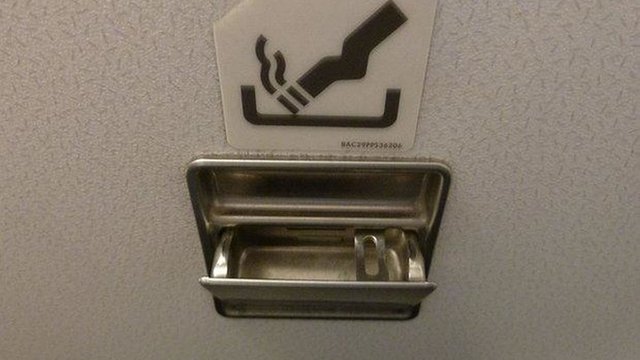Airplane Ashtrays: Safety Over Smoking Ban
In the early 1990s, smoking on airplanes was banned, with Scottish carrier Loganair taking the lead in 1980. Despite this long-standing prohibition, astute passengers may still spot ashtrays on board. This practice continues for a compelling reason: safety. Before the ban, smoking was common on flights, with designated sections doing little to contain smoke. British Airways trialed a smoking ban in 1990, with a full ban implemented in 1998. The UK phased in the ban through the 1990s, and modern planes now feature a single ashtray in the toilet for legal reasons.
The Civil Aviation Authority (CAA) mandates ashtrays in lavatories as a safety measure, even with the smoking ban in place. If a passenger defies the rules, an ashtray provides a safe place to extinguish a cigarette, reducing fire risks. This regulation stems from tragic incidents like the 1973 Rio De Janeiro to Paris flight, where an emergency landing due to smoke in the cabin resulted in 123 deaths. A cigarette extinguished in a toilet waste bin was a possible cause.
The FAA's Stance on In-Flight Smoking
In the USA, the Federal Aviation Administration (FAA) requires ashtrays on all airliners, despite the illegality of smoking on board. This mandate is to provide a convenient disposal location for cigarettes, ensuring compliance with the "no smoking" policy. The FAA notes that the absence of ashtrays could lead to passengers depositing lit materials in lavatory receptacles, increasing the risk of in-flight fires.
United Airlines was the first to prohibit smoking in the 1970s, and by 2000, most airlines globally had followed suit. The ban protects the health of passengers and crew in a confined space and eliminates the fire hazard associated with smoking. Despite this, ashtrays remain in lavatories as a precaution.
The Consequences of Ignoring the Ban
The fines for smoking or vaping on an aircraft are severe, with penalties up to £5,000 and potential criminal charges. The FAA keeps records of "unruly passengers" and can propose civil penalties up to $37,000 per violation. Despite these measures, some passengers still choose to smoke, necessitating the continued presence of ashtrays.
When asked about removing ashtrays, the FAA responded that they provide a place to dispose of smoking materials in the event the "no smoking" policy is not adhered to. The agency is concerned that without ashtrays, passengers might deposit lit materials in lavatory receptacles, risking fires.
The Impact of Smoking on Air Safety
The presence of ashtrays serves as a reminder of the potential dangers of smoking on board. A cabin fire is a terrifying event, and airlines must be prepared for such eventualities. The ashtray is there for passenger safety, not as an invitation to smoke. Passengers should seek alternatives like nicotine patches rather than endangering the safety of all on board.
In 2000, Bill Clinton signed a law banning smoking on all domestic and international flights to and from the U.S., culminating in efforts to limit smoking on board since the 1970s. The law reflects the collective goal of ensuring passenger safety and comfort during air travel.
